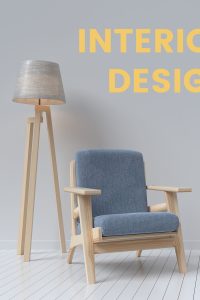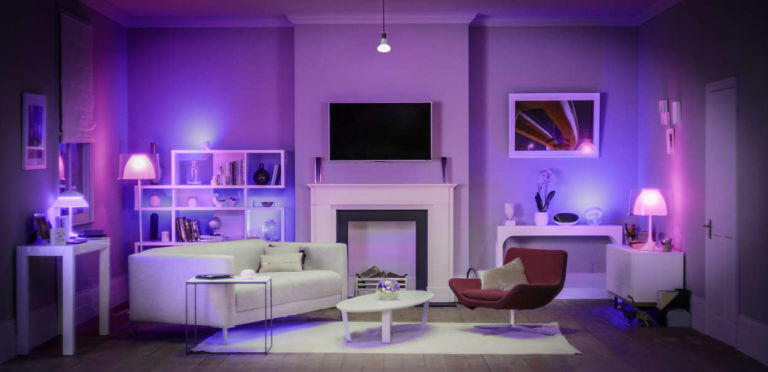Light is one of the key elements of design. We tell you how to plan the lighting in each environment to enhance the space. Every options.
There are different types of lighting and each one has particularities that we must consider when planning the light in each environment. It is not only about what is strictly functional, but also about the decoration and the climate we want to create in that space. We tell you what the characteristics of each one are and what options you can consider to take advantage of the full potential of this resource.
Lighting types
Table of Contents
Indoor and outdoor spaces can be structured and shaped using light as a central resource. To do this, we must know what the basic types of lighting are and how to use them based on your goals and needs:
general
The general lighting is what allows us to see and move around the space where we are. To be useful, it shouldn’t dazzle us with strong reflections or contrasts, but it shouldn’t leave harsh shadows that hide corners.
What is advisable is to place one or more light bulbs above the eye, recessed or hanging from the ceiling or in wall sconces and that light is soft and uniform. Indoors, general lighting represents the backlight and helps us quickly understand the dimensions and characteristics of a room.
Spot lighting
In some cases, and to carry out certain activities, it is necessary to focus for a long time on a place or on a work surface. In order not to strain your eyes, these areas should be illuminated with functional spotlights.
For this a more intense type of light is used. Although it is intended to directly illuminate a specific area, most of the time it also works very well as a complement to the decoration and as a support for general light.
Ambient light
This type of lighting has the function of creating a certain relaxed, warm and comfortable atmosphere, through different shapes and colors.
The light used is supportive, since it is not enough to illuminate an environment and even less a specific activity. It can be thought for both the interior and exterior of the home.
An interesting resource is to use dimmers to convert general or point light into ambient light.
Decorative lighting
To highlight objects or even ornamental details in architecture, we can resort to what is known as lighting accents. It is a resource that accompanies decoration and must be significantly brighter than general lighting to attract attention.
Its effect is only strong when used sparingly, for example, on objects such as a painting or sculpture, or to bring the view to an individual wall different from the rest.
Indoor and outdoor lighting
For the light to be well distributed and meet the objectives you set for yourself, it is important to find the most suitable lamps and luminaires and carefully design their arrangement. Let’s see how to use them in each space:
Kitchen lighting
In the kitchen, the key is functionality. The general light must be uniform, consume little and, something very important, not generate heat. Regarding the lighting fixtures that can be used, it is advisable to use spotlights or fluorescent tubes, visible or recessed, thus allowing a more direct and precise light.
Fixtures with integrated led lights look super good, which you can get in warm and cold tones. There are more and more cute designs.
Bathroom lighting
The bathroom is one of the places where light must fulfill practical and aesthetic functions in perfect doses. To enjoy the space more and better, you need the lighting there to be functional but also punctual.
The cases in which these environments have natural light are not frequent, so it is important to put general lighting on the ceiling with spotlights or ceiling.
Ideally, place low-power options to lower costs and save energy. Likewise, it is important to have a point light in the area of the sink and mirror, preferably low voltage, since they avoid the appearance of annoying shadows.
Dining room lighting
In this space the lighting must have the ability to adapt to different situations, from a family dinner or with friends to a romantic dinner.
The most advisable thing is to use pendant lamps, since the ambient lighting must come from the top, over the diners. Ideally, they should be adjustable to attenuate or intensify them according to the use of each moment. For special occasions it can be complemented or replaced with floor lamps and with the use of decorative candles.
Outdoor lighting
Adding light to your balcony, your patio or your park is as important as doing it in the rest of the rooms of your home. Outdoors, the starting point is the joint observation of the entire space, to then make decisions about what you want to highlight or the effect you want to generate.
You can generate a warm general lighting and then highlight an object, plant or tree. Or you can also set up a little corner of rest with a dim ambient light.
A Solar LED torch is ideal to give depth effect to your garden, terraces or any area where you want to give an elegant image. It is also advisable to consider the use of fluorescent, halogen or LED lamps, since they illuminate four times more than ordinary bulbs and have a longer life.
Types of lighting in photography
In photography, light is a primary element. And there are also classifications according to the light source, the diffusion and the directionality:
- Natural light : comes from natural sources, that is, from the sun or the moon.
- Artificial light: comes from lamps, bouncers or flashes, which are placed by the photographer according to the effect he is looking for in his shot.
- Hard light: it is generated when the light source is point, large and close to the object. Produces a shadow with sharp, very defined edges.
- Soft light: generated by a very large and low intensity light source. It results in very diffuse lighting, which casts almost no shadows or does so very dimly.
- Front light : Although it enhances details, this light erases shadow contrasts, flattening objects and removing texture.
- Side light: unlike the previous one, it generates reliefs thanks to the contrasts and highlights the textures, highlighting the volume and depth of three-dimensional objects. However, the details are more lost.

